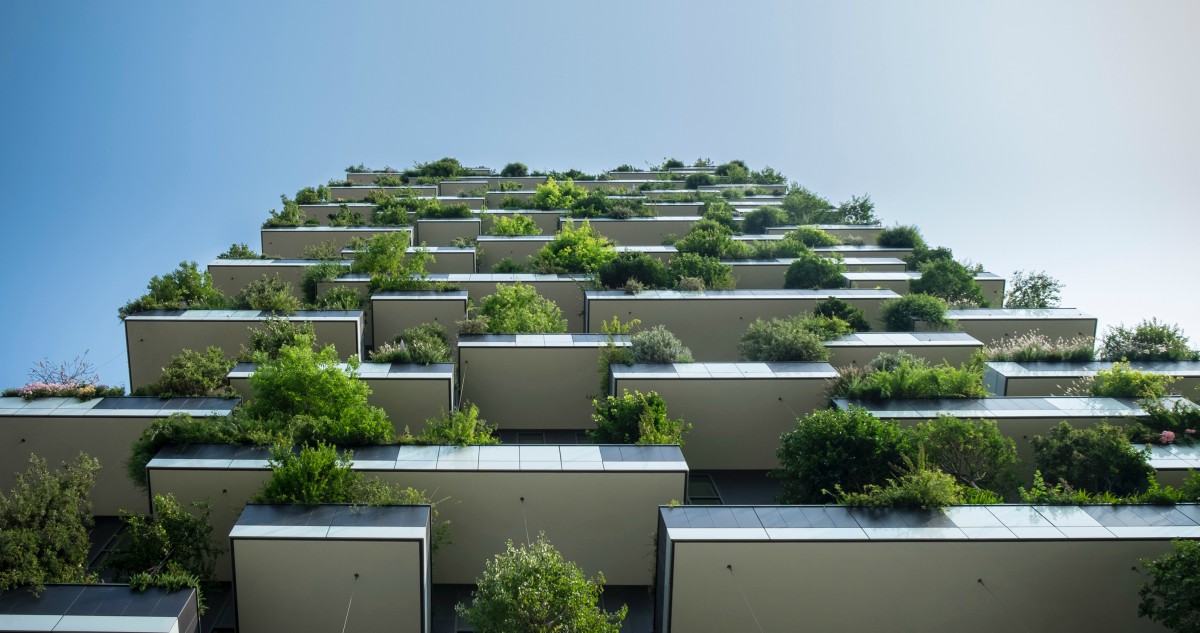Investors see returns in healthy buildings

Real estate investors know that healthy buildings are a good thing, but an increasing amount of evidence is emerging to show that they are also good business.
While it remains hard for investors to see the benefits of a healthy building in their bottom line, there are more tools than ever before which allow occupiers to quantify the benefits of wellness for productivity. In time, this should translate into higher rents and capital values.
In an interview with National Real Estate Investor last year, John Mooz, Senior Managing Director for Hines in Houston, said buildings with healthy features could attract a rental premium of up to 20 percent.
Building wellness measures might include better access to daylight, noise reduction and increased ventilation to help employees feel more comfortable year-round. A building might also offer healthy eating options or be designed to encourage walking, while offices could feature “biophilic design” elements, such as indoor gardens which are intended to bring nature indoors.
Where the industry is today on healthy buildings, is similar to where green buildings were 10 to 15 years ago, according to Matthew Clifford, Head of Energy and Sustainability Services, Asia Pacific – JLL.
“Landlords are experimenting with promising technologies and techniques, in order to work towards a clear understanding of exactly how to maximise the value and output.”
“Leading firms understand they are in the ‘early adopter’ phase, but see enough value and benefits, especially in terms of communicating wellness plans to staff and occupiers, that they continue to push ahead,” he added.
JLL is one of the sponsors of a series of studies on the “Cognitive Effects of Green Buildings”; carried out by scientists in the U.S. The studies showed that working in high-performing green certified office buildings produced 26.4 percent higher cognitive test scores, 30 percent fewer symptoms of “sick building” problems, such as headaches and dry throats, and even better sleep.
The survey, carried out in 10 U.S. office buildings, is now being extended to 100 buildings worldwide.
Ruben Langbroek, Head of Asia Pacific real estate at ESG benchmarking organisation GRESB, says healthy buildings can lead to significant financial gains for occupiers. “If you look at environmental sustainability measures – such as conservation of water and energy use – there are financial gains from cost saving.”
“However, compared with human resources, real estate is a smaller part of a corporation’s costs. If a company can improve employee productivity or reduce absenteeism by occupying healthy buildings, the gains can be very significant.”
For example, it is estimated that absenteeism costs U.S. employers an average of more than US$2,000 per employee each year.
Langbroek adds: “Being able to attract and retain talent is also important to corporations and providing healthy indoor environments that support occupant satisfaction and well-being aid this.”
The Urban Land Institute’s Building Healthy Places Institute undertook a series of interviews with developers of healthy buildings for a report entitled “Building for Wellness: the business case”.
The study – which covered residential, office and mixed-use projects – found developers reported better-than-expected sales and leasing. The study also found that the cost of healthy buildings was lower than expected. Other studies have placed the additional costs of well buildings at US$10-40 per square meter.
Retail property can also benefit from wellness initiatives, a study by the World Green Building Council found in 2016. “Evidence shows greener, healthier retail stores – those which typically have good levels of daylight, fresh air and greenery – are becoming more attractive to consumers and potentially more profitable for retailers,” the report said.
Developers and investors now have wellness standards and benchmarks for their portfolio. The International Well Building Institute’s WELL certification programme has registered or certified nearly 800 projects worldwide and is now working to streamline itself with LEED certification.
JLL’s office in Shanghai recently achieved WELL Platinum certification – the third such certification globally, and the first outside North America.
“So far, the office has been a tremendous success, with high levels of engagement from staff, and it has become a showcase to clients and colleagues on what can be done with careful planning and execution,” says Clifford.
GRESB has launched a health and wellness module in addition to its standard ESG assessment. “Demand for this was driven by both investors who want to invest responsibly and generate positive social impact, and managers who want recognition for their efforts,” says Langbroek.
“In 2017, about one-third of the total GRESB Real Estate participants took part in the Health & Well-being Module and we expect to further grow our coverage this year. At the same time, the Module will become more granular in assessing this aspect of real estate companies, funds and their portfolios.”
ARTICLE SOURCE: https://www.theinvestor.jll/news/world/office/investors-see-returns-heal...
IMAGE SOURCE: https://www.theinvestor.jll/news/asia-pacific/others/future-green-buildi...




